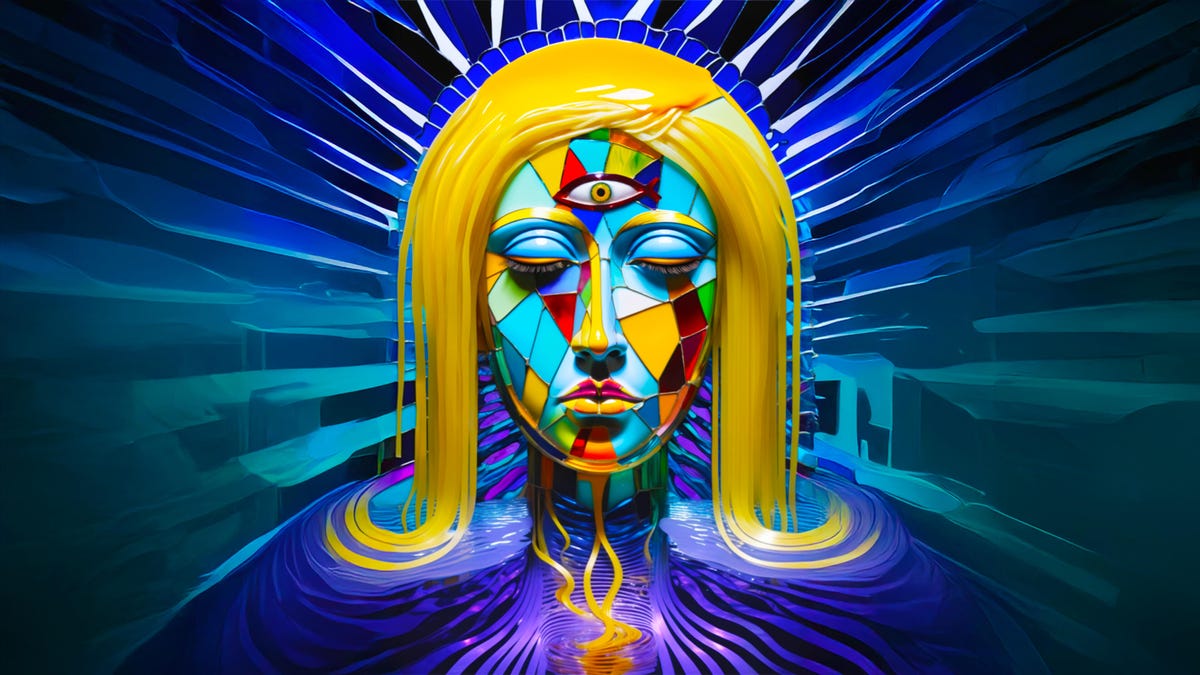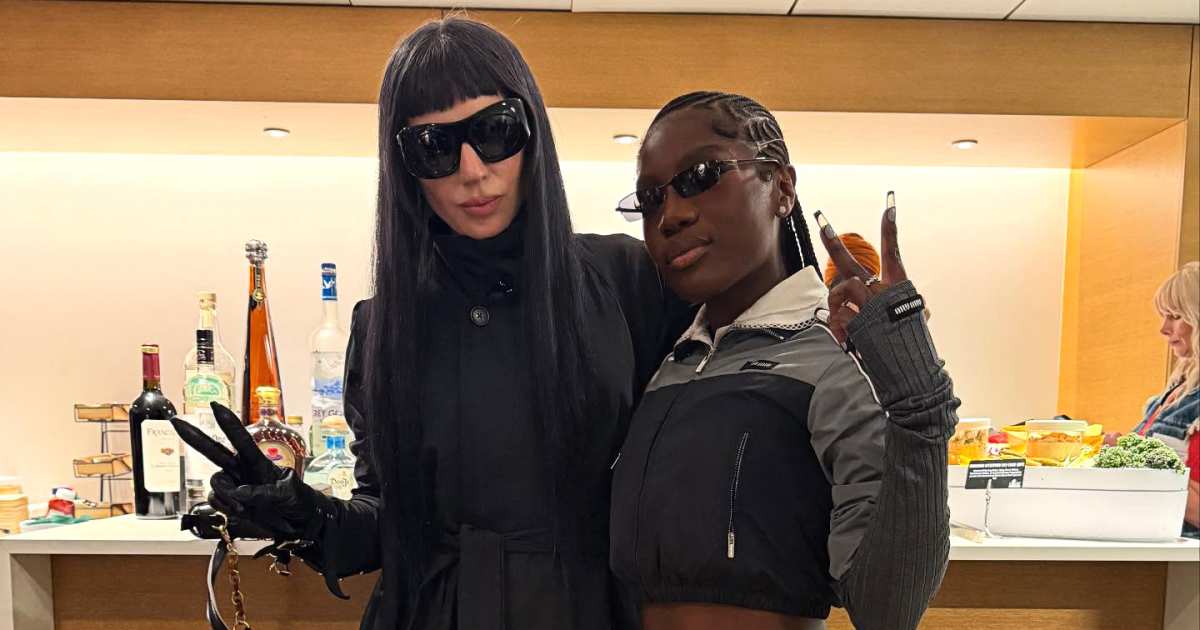Tech
This Company Got a Copyright for an Image Made Entirely With AI. Here’s How

The Rise of AI-Generated Art and the Question of Copyright
A Single Piece of American Cheese: An Origin Story
In the ever-evolving world of AI, a peculiar image has made headlines: "A Single Piece of American Cheese," created by Kent Keirsey, CEO of Invoke, an AI creation platform. The image depicts a woman with three eyes, spaghetti-like hair, and a slice of yellow, melted cheese dripping down her head. Her body is a mosaic of colorful, stained-glass-like shards. While the image may seem bizarre, its significance lies not in its appearance but in its historical milestone—it is one of the first AI-generated images to be granted a copyright.
Keirsey’s journey to creating this image began with a basic AI-generated picture. He then used a process called "inpainting," where specific regions of the image are highlighted, and new AI elements are generated in those areas using additional prompts. This meticulous editing process involved adding roughly 35 AI-generated elements to the original image, resulting in the final composition. Keirsey’s hands-on involvement in shaping the image was crucial in arguing for its copyright eligibility.
The Path to Copyright: A Breakthrough for AI Art
When Invoke first applied for a copyright for "A Single Piece of American Cheese" in August 2024, the U.S. Copyright Office rejected the application, citing a lack of human authorship. However, after submitting additional evidence, including a timelapse video of the image’s creation and a detailed explanation of Keirsey’s role, the Copyright Office reversed its decision in January 2025. The office concluded that the image contained "sufficient human original authorship" through Keirsey’s selection, arrangement, and coordination of AI-generated material.
The Copyright Office made it clear that the individual AI-generated elements themselves were not copyrightable, but the composition as a whole—Keirsey’s deliberate and creative combination of these elements—was protected. This ruling sets an important precedent for AI-generated art, emphasizing that human creativity and oversight are key to copyright eligibility.
Composite Images and the Future of Copyright
The U.S. Copyright Office has been grappling with the complexities of AI-generated content since launching its AI initiative in March 2023. Hundreds of creators have successfully registered copyrights for works that incorporate AI elements, but the process requires transparency about AI usage. The office considers AI-generated components as pre-existing material, which cannot be copyrighted. Instead, it is the original contributions by humans—such as unique arrangements, text, or imagery—that are protected.
In Keirsey’s case, the composite nature of the image, created through his intentional manipulation of AI-generated elements, was deemed worthy of protection. This mirrors the concept of a collage made from public-domain photographs. While the individual photos may not be copyrighted, the creative arrangement of these photos into a new work can be. Judd Lauter, special counsel at Cooley LLP, who worked on the copyright application, explains this logic, noting that the Copyright Office has recently affirmed that AI-edited or enhanced images can qualify for copyright, much like films or photos that use AI tools for de-aging or retouching.
Human Authorship in the Age of AI
One of the fundamental requirements for copyright is human authorship, meaning the work must be created by a real person. However, the rise of AI art has sparked debates about the extent of human involvement in the creative process. In Keirsey’s case, the Copyright Office acknowledged that his use of inpainting and other tools demonstrated sufficient creative control to warrant copyright protection.
The broader implications of this decision are significant. AI systems are trained on vast amounts of existing content created by humans, raising concerns about the ethical and legal use of this material. While some companies, like Invoke, use open-source models and respect user ownership of their creations, others face legal battles over the unauthorized use of copyrighted works in AI training. The success of Keirsey’s application offers hope for creators seeking to copyright their AI-edited work, but it also highlights the need for clear guidelines on what constitutes "sufficient human authorship."
The Broader Implications for Creativity and Technology
The story of "A Single Piece of American Cheese" is more than just a quirky milestone in the history of AI art. It represents a shift in how we understand creativity and ownership in the digital age. Keirsey and his legal team have demonstrated that human creativity remains a vital component of AI-generated works, even as technology continues to evolve.
Looking ahead, the relationship between humans and AI in art will likely continue to evolve. While AI can generate stunning visuals and ideas, it is human imagination, direction, and oversight that give these works meaning and value. As Lauter notes, this case establishes a "threshold" for copyright eligibility, encouraging creators to experiment with AI tools while ensuring that their contributions remain central to the creative process.
Conclusion: Embracing the Future of Art and Technology
For now, "A Single Piece of American Cheese" stands as a symbol of what is possible when humans and AI collaborate. Its absurdity, as Keirsey describes it, reflects the challenges and complexities of navigating the intersection of art and technology. While the legal and philosophical debates surrounding AI-generated art are far from over, this image offers a reminder that creativity is still very much a human endeavor. As Keirsey puts it, "Humans aren’t going away. The creativity that we have matters just as much as it did five years ago."
The future of art and AI is uncertain, but one thing is clear: the interplay between human imagination and technological innovation will continue to shape the boundaries of creativity and ownership. Whether it’s through mosaic-like compositions or other forms of AI-assisted art, the role of the human creator remains indispensable.
-

 Money3 days ago
Money3 days agoConsumer Financial Protection Bureau Adds Error Message To Home Page
-

 Australia23 hours ago
Australia23 hours agoTropical Cyclone Zelia intensifies to category 2 storm
-

 Money2 days ago
Money2 days agoWinning Content Strategies For Wealth Managers
-

 Asia1 day ago
Asia1 day agoWhat you need to know about 2024 YR4, the asteroid that could hit Earth in about eight years’ time
-

 Entertainment16 hours ago
Entertainment16 hours agoPrince Harry and Meghan Markle’s Best Moments and Photos From the 2025 Invictus Games
-

 Australia10 hours ago
Australia10 hours agoTropical Cyclone Zelia intensifies to category five system off Pilbara coast
-

 Politics1 day ago
Politics1 day agoDozens of religious groups sue to stop Trump admin from arresting migrants in places of worship
-

 Entertainment3 days ago
Entertainment3 days agoEvery Celebrity Who Attended the 2025 Super Bowl: A Guide to the A-Listers at the Big Game









